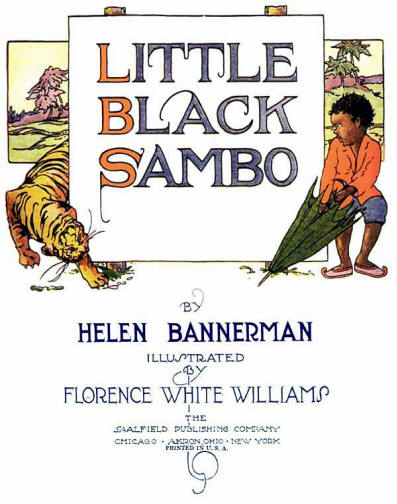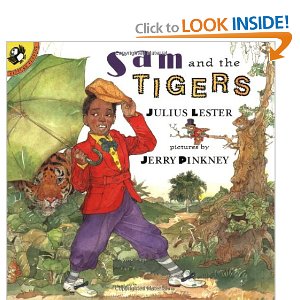Little Black Sambo controversy in Japan
 Saturday, May 8, 2010 at 10:30AM
Saturday, May 8, 2010 at 10:30AM The controversy over Helen Bannerman's Little Black Sambo continues. This time the problems are surfacing  again in Japan, which has a long history of misinterpreting images that are considered in racist in the U.S. but are sometimes seen as 'cute' in that country. Just learned that I am a source in an April 13, 2010, article in Japan Times: " 'Sambo' racism row reignites over kids' play: The 1899 book still making waves in 21st-century Japan." Writer Matthew Chozick has a quotation from my essay “Reviving or Revising Helen Bannerman’s The Story of Little Black Sambo: Postcolonial Hero or Signifying Monkey?” in Voices of the Other: Children’s Literature and the Postcolonial Context edited by Roderick McGillis (Garland, 1999: 223-52).
again in Japan, which has a long history of misinterpreting images that are considered in racist in the U.S. but are sometimes seen as 'cute' in that country. Just learned that I am a source in an April 13, 2010, article in Japan Times: " 'Sambo' racism row reignites over kids' play: The 1899 book still making waves in 21st-century Japan." Writer Matthew Chozick has a quotation from my essay “Reviving or Revising Helen Bannerman’s The Story of Little Black Sambo: Postcolonial Hero or Signifying Monkey?” in Voices of the Other: Children’s Literature and the Postcolonial Context edited by Roderick McGillis (Garland, 1999: 223-52).
The Sambo book is complicated as the story, in and of itself, appeals to many children and was never  Little Black Sambo reinterpreted with positive African-American images by Julius Lester and Jerry Pinkneyintended by Bannerman to be racist. Unfortunately, the images most associated with the children's book are also connected with negative stereotype images of African-Americans. Bannerman did not set the story in the United States; it grew out of her experiences living in India. Still, it is important to respect that some African-Americans see some of the Sambo illustrations as racist. On the other hand, Julius Lester and Jerry Pinkney have re-interpreted the story to incorporate positive illustrations of African-Americans: Sam and the Tigers: A Retelling of 'Little Black Sambo' (Puffin: 2000).
Little Black Sambo reinterpreted with positive African-American images by Julius Lester and Jerry Pinkneyintended by Bannerman to be racist. Unfortunately, the images most associated with the children's book are also connected with negative stereotype images of African-Americans. Bannerman did not set the story in the United States; it grew out of her experiences living in India. Still, it is important to respect that some African-Americans see some of the Sambo illustrations as racist. On the other hand, Julius Lester and Jerry Pinkney have re-interpreted the story to incorporate positive illustrations of African-Americans: Sam and the Tigers: A Retelling of 'Little Black Sambo' (Puffin: 2000).
